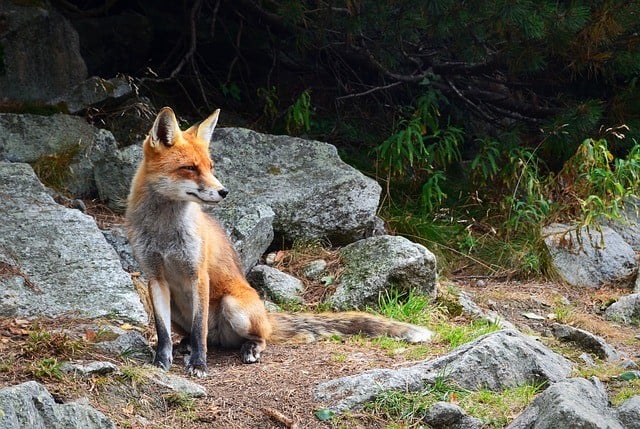
If you’re an animal lover, going on an African safari is probably an item on your bucket list. But what if you could enjoy the perks of animal-watching without the cost of an international plane ticket and the need for professional guidance? What if you could go on a safari anytime you wanted, all from the comfort of your own home?
The good news is that you can, and the better news is that this guide will show you how!
A home-based safari is an excellent way to learn about and appreciate local wildlife, spend time outside, and can even be an easy source of exercise. Whether you’re in the mountains of the Pacific Northwest, the flatlands of the Great Plains, the marshy woods of the Southeast or anywhere else in the United States, you can observe all kinds of animals from your very own backyard. So grab a partner, whether it’s your spouse, child or neighbor, and get to exploring!
General Preparation and Safety Considerations
Before heading off on your backyard adventure, you’ll want to make sure you’re properly attired. There are a few factors to consider:
- The season and current weather conditions
- The terrain of your yard and property
- Time of day
- The amount of direct sunlight your property receives
- Native brush and other plants in your area
With all these considerations in mind, choose an outfit that you’ll be comfortable in. Be willing to make a few compromises if necessary; for instance, if the weather is warm but your yard has a lot of brush to walk through, you might be better off in pants made of breathable fabric instead of shorts. If the forecast is unclear but it looks like rain, go ahead and put on your raincoat and boots so you’re prepared no matter what. Even though you’ll be steps away from fresh clothes if needed, you’ll appreciate not having to make a mad dash — especially if you’re observing a potentially dangerous animal nearby!

Layer your clothes during cold or wet conditions, and opt for breathable fabric when it’s hot. If the animals in your area are skittish, it might help to wear neutral colors like brown, black, grey, and earth-toned greens to help you blend into your surroundings. However, if hunting is common in your area and you have extensive property, make sure you are easily visible to people by wearing bright, neon colors or reflective gear. Though you should be aware of visitors, it’s safest to assume that someone could have accidentally wandered onto your property while hunting, especially if you’re with kids.
Wear comfortable, closed-toe shoes. Hiking boots are great for particularly tough, rocky terrains. Desert-dwellers might appreciate a high-top boot or shoe for additional protection against scorpions, snakes, and venomous lizards. Keep in mind that if you live near water, you’ll want shoes that are waterproof or weatherproof — an old pair of rain boots or beat-up combat boots will do just fine.
Finally, there are a few supplies you might want to consider bringing in a backpack or small bag:
- Flashlight or headlamp
- Binoculars
- Local field guide
- First aid kit
- Area map
- Camera or smartphone
- Compass
- Pen and small notebook
- Sunscreen and/or bug repellant
- Dry snacks (trail mix, granola)
- Bottled water

Remember, just because you’ll be on your own property doesn’t mean it won’t be handy to have some supplies readily available. If you have several acres of land, it’s especially important to have basic first aid supplies and extra water. Consider any relevant medical conditions, too: asthmatics should bring an inhaler, diabetics should have some healthy snacks, and someone with severe allergies (especially outdoor allergies) should have an emergency epinephrine shot.
Going on Safari
Whether you’ve lived in your home for decades or moved in only recently, it’s quite possible that there are all kinds of wildlife in your backyard that you’re unfamiliar with. Start your safari endeavor by going outside with a pen, notebook, and binoculars if you have them. Find a comfortable place to settle — a shady spot if it’s hot outside and somewhere out of the elements if it’s cold — where your presence won’t be a disturbance to nature. Then, simply observe and document what you see.
Take note of details like when and where you saw the animal, including the time of day and year. What was the creature doing? Was it alone or with others of its species? Did it make any sounds? Does it appear to have a habitat nearby?
Over time, watch for patterns. Perhaps some animals only come out at night, and others only in the early morning while it’s cool and damp outside. Are there certain areas of the yard or property that see a lot of different wildlife? What do the animals eat? Do they seem to prefer one kind of snack over another? How do the behaviors and presence of animals change with the seasons and weather?
Starting this kind of nature journal is a great way to introduce yourself to your animal neighbors and start setting safari goals. For example, if you see a doe in the fall, you might want to observe the way she interacts with her young come spring. You can list your goals in your nature journal, along with anything else you might want to include, like sketches, poetry, or photos.
If you’re partnering with your child for your safari, try breaking up your observations into categories and incorporating more structured lessons. For instance, perhaps for a couple of weeks you can focus on observing animal habitats, and then you can move on to eating habits. The skills and insights your child develops through home-based safaris can even help them in science class, so seek opportunities to pair your adventures with their studies. Some children grasp concepts better when there’s a hands-on element, and they could even become more excited about learning in general once they realize it can happen anywhere, anytime — even when they’re having fun!
Make sure to ask your child plenty of questions about your safari adventures, both during and after the fact. For example, you can initiate a conversation about hibernation by asking your child which animals he or she hasn’t seen since winter began and why that may be. Encourage the use of critical thinking skills whenever possible. If your area is seeing a drought, for instance, engage your child in a discussion about where local wildlife may be finding hydration, and use local maps to find potential water sources. Once you’ve gone inside for the day, you can work on a joint nature journal entry or let your child start his or her own.
A key element of safari is to avoid disturbing any animals you see. Keep a safe distance at all times, and be sure to communicate this necessity very clearly to children. Never entice a wild animal to come closer; most creatures must be fearful of humans in order to survive. Encouraging a wild animal to encroach on developed land could put its life, not to mention your own safety, at risk.

As you begin to branch out and explore your property, you should also be mindful of habitats. Make it a point to learn about the kinds of homes the wildlife of your backyard prefer so you know what to be aware of. Some animals will be excellent at concealing their nests, so keep a sharp eye out. When possible, do take a moment to admire the craftsmanship many animals put into their habitats. You might realize a bird used a piece of your old bandana to insulate its nest, or realize you’ve walked past a rabbit’s burrow a thousand times without spotting it. It’s truly fascinating to see the resourceful effort many creatures put into their home — just be sure you don’t touch or disturb it and make the animal fearful to return!
Consider bringing along a camera to document your safari discoveries. You don’t have to be a professional photographer to capture the beauty of nature, and it’s exciting to show others your progress. A smartphone is an easy alternative if you don’t have a separate camera, but be sure to silence the ringer before heading out on safari to avoid disturbing the animals. If you find yourself wanting to get a better shot of a particular animal, focus your efforts on observing its habits for a week or two. Pay attention even when you’re not on safari, simply taking note of when and where you see the animal from the kitchen window or back patio. Not only will you find the right opportunity for a beautiful picture, you’ll develop an even deeper appreciation for the animal by studying it more closely.
Engage your family, friends, and neighbors in conversation about your safari efforts, and encourage your child to do the same. Enjoying a hobby and having the opportunity to develop expertise can be an excellent self-esteem boost for kids. Plus, inviting friends over for a backyard safari is a great opportunity to socialize and learn together. It might be especially beneficial for children who struggle with social skills; it gives them a topic of conversation to feel confident discussing, and will be probably be an easy icebreaker amongst others their age. After all, most kids love animals!
Whatever your specific, individual goals, your overall aim for at-home safaris should be to develop a better understanding and appreciation of the animals in your area. So often we take local wildlife for granted, which is a shame since observing them in greater detail is so rewarding. Enjoy the safari experience, and share it with others whenever possible.

 United States
United States Canada
Canada